
What a View: Amazing Astronaut Images of Earth
Astronaut
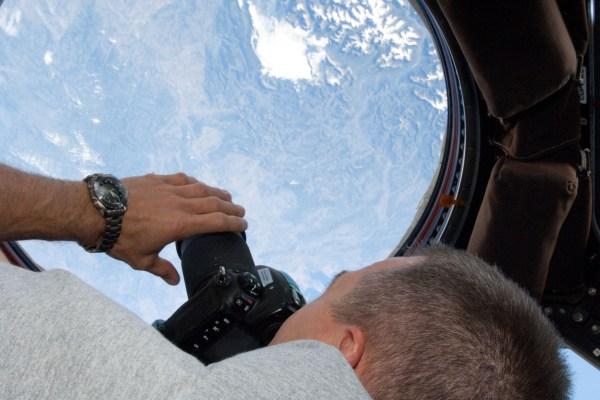
Astronauts on board NASA's space shuttles the International Space Station (ISS) have a unique view of the world because of their position in a low orbit (200 nautical miles, 360 km). While they're circling high above the Earth, astronauts take advantage of the view and snap pictures to share with those of us back on the ground.
In the image above, NASA astronaut Andrew Feustel, STS-134 mission specialist, uses a still camera to photograph the topography of a point on Earth from a window in the Cupola of the International Space Station while space shuttle Endeavour remained docked with the station.
Here, in honor of the last space shuttle launch, we take a look at some of the amazing images that astronauts have taken while up in space in the shuttle era.
Highest Mountains
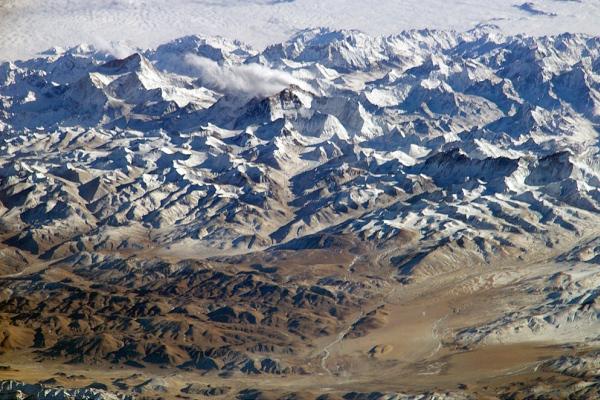
Astronauts aboard the ISS took advantage of their oblique view to photograph views of the Himalayas Earth's highest mountain range looking south from over the Tibetan Plateau.
At first glance, one might think that this image, taken on Jan. 28, 2004, looks like a picture taken from an airplane, until you remember that the summits of Makalu (left), some 27,765 feet (8,462 meters) and Everest (right ) at 29,035 feet (8,850 m) are at the heights typically flown by commercial aircraft. The full mosaic covers over 80 miles (130 km) of the Himalayan front, and could never be seen this way from an airplane.
Sunrise from Space
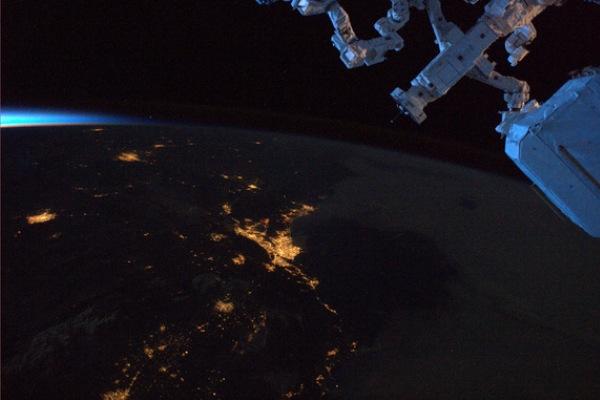
An astronaut's position in orbit also gives them a unique perspective on sunrise and sunset.
Dawn breaks over California in the United States April 17, 2011 in this photo by NASA astronaut Ron Garan from the International Space Station.
The lights of Los Angeles appear in the foreground while San Francisco appears in the back near the horizon.
Sunset
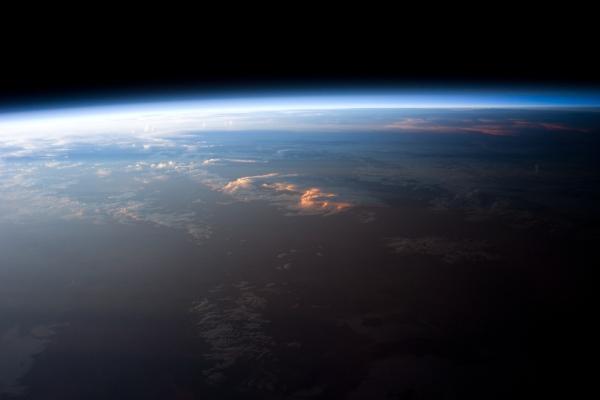
In one 24-hour period, astronauts aboard the shuttle and ISS see not one sunrise and sunset, but 16 on average.
Each changeover between day and night is marked by the terminator, a line on Earth's surface separating the sunlit side from the darkness. While the terminator is often conceptualized as a hard boundary, in reality the edge of light and dark is diffuse due to the scattering of light by the Earth's atmosphere. This zone of diffuse lighting is experienced as dusk or twilight on the ground; while the Sun is no longer visible, some illumination is still present due to light scattering over the local horizon.
The terminator is visible in this panoramic view across central South America, taken on April 12, 2011, looking towards the northeast. An astronaut shot the photo at approximately 7:37 p.m. local time.
Night Lights
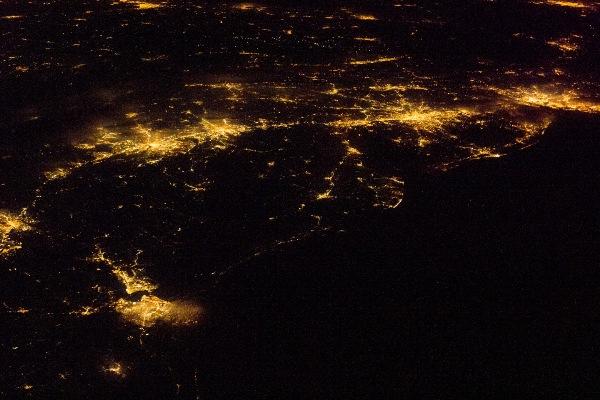
The shuttle astronauts' overhead view also lets them see the signatures of Earth's lit-up cities at night.
This photo taken from aboard the ISS on April 6, 2011, shows all the major metropolitan areas along the Atlantic Seaboard and Northeast, except for Boston, which is located just off the image to the northeast.
Southwest
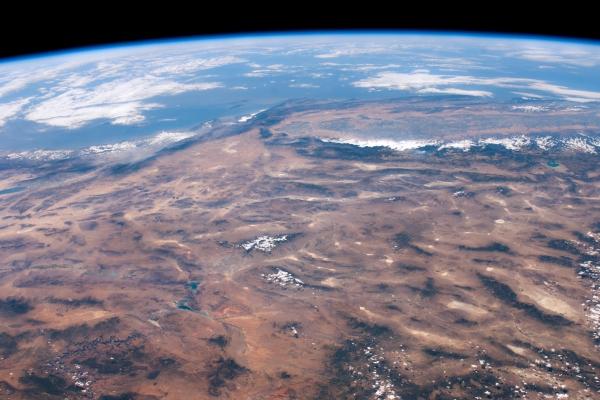
This image, taken aboard the ISS on Sept. 9, takes in a wide view of the U.S. Southwest the benefit of being up so high and includes parts of Arizona, Nevada, Utah and California, as well the coastline of Baja California, Mexico.
The Las Vegas metropolitan area appears as a gray region adjacent to the Spring Mountains and Sheep Range, which are both covered by clouds in this image. The Grand Canyon is visible to the east of Las Vegas, with the blue waters of Lake Mead in between. It is even possible to see the Mojave Desert, which stretches north from the Salton Sea to the Sierra Nevada mountain range.
Fall Foliage

Even from their high perch, astronauts are still able to enjoy the signs of the changing seasons, including the brilliant colors of tree leaves in autumn.
This astronaut photograph, taken at the end of September, captures red- (maple trees) and gold-mantled (aspen trees) hill slopes along the western mountain front to the south of Salt Lake City.
Get the world’s most fascinating discoveries delivered straight to your inbox.
Monster Storms
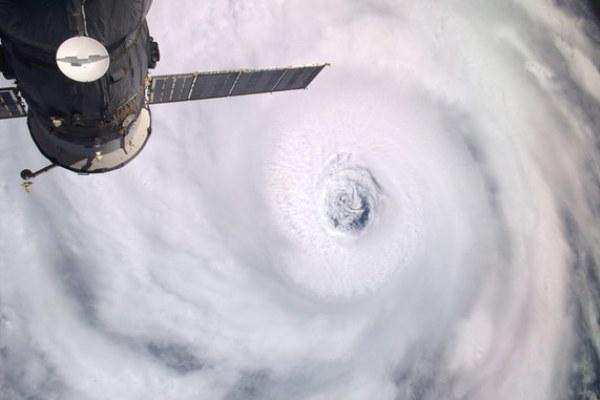
Astronauts can also get a unique perspective on Earth's severe weather, including the swirling masses of clouds that make up a hurricane .
Hurricane Igor dazzled the crew aboard the International Space Station and even earned a nickname after the astronauts gazed straight through the huge storm's eye to see the ocean waters below.
The eye of Hurricane Igor takes center stage in this photo by NASA astronaut Doug Wheelock from the ISS on Sept. 14, 2010. Wheelock posted a photo of it on Twitter, where he writes as Astro_Wheels, and dubbed the hurricane "Igor the Terrible."
Earth Edge-On
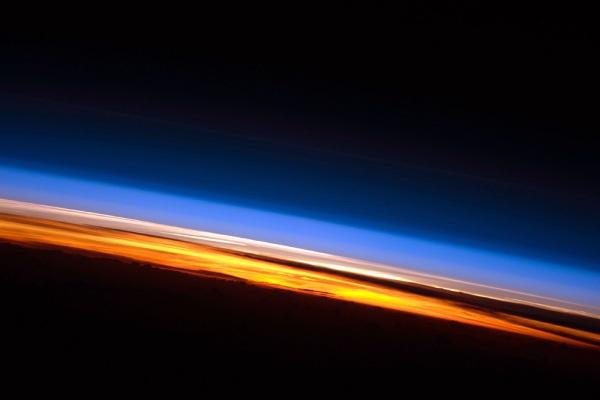
Astronauts aren't confined to looking down on Earth, they can also look at it edge-on.
This image taken during sunset over the Indian Ocean facing west, and because of the astronauts' unique perspective, the layers of the Earth's atmosphere are visible in the gleam of the setting sun.
Tsunami Damage
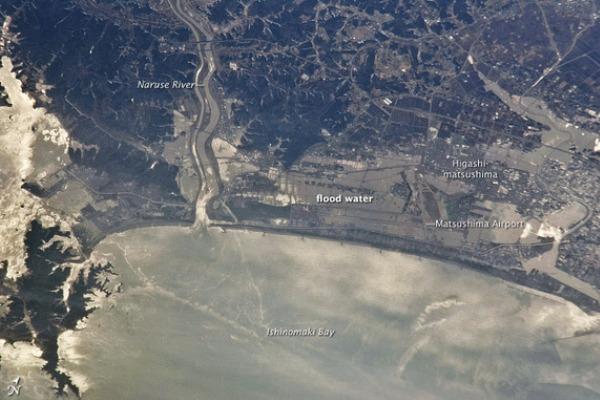
In addition to all the amazing sites astronauts see, they also see some heart-wrenching ones.
After the March 11 9.0 magnitude earthquake and ensuing tsunami that devastated Japan, astronauts were able to see the damage wrought by the monster waves. [Related: The 10 Biggest Earthquakes in History]
A March 13 photo captured by the astronauts showed how the region north of the coastal city of Sendai appeared from the station's altitude of 220 miles (354 kilometers). The image shows Japan's Ishinomaki Bay, Naruse River and part of the city of Higashimatsushima. Flood water is rampant in the view.
Northern Lights
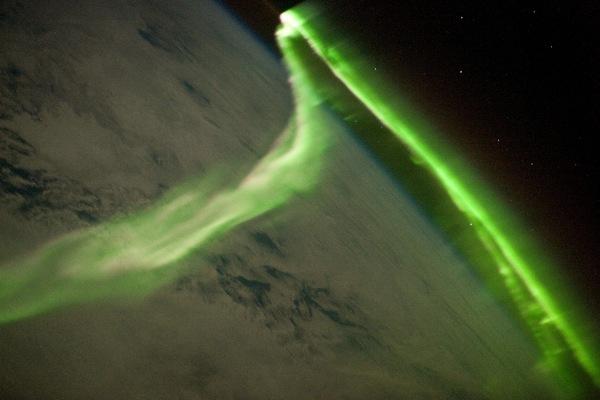
The amazing views enjoyed by astronauts aboard the shuttle and ISS aren't confined to the Earth's surface they can also see stunning sites in the skies, most notably, auroras.
This striking aurora image was taken during a geomagnetic storm that was most likely caused by a coronal mass ejection from the Sun on May 24, 2010. The ISS was located over the Southern Indian Ocean at an altitude of 350 kilometers (220 miles), with the astronaut observer most likely looking towards Antarctica (not visible) and the South Pole.

